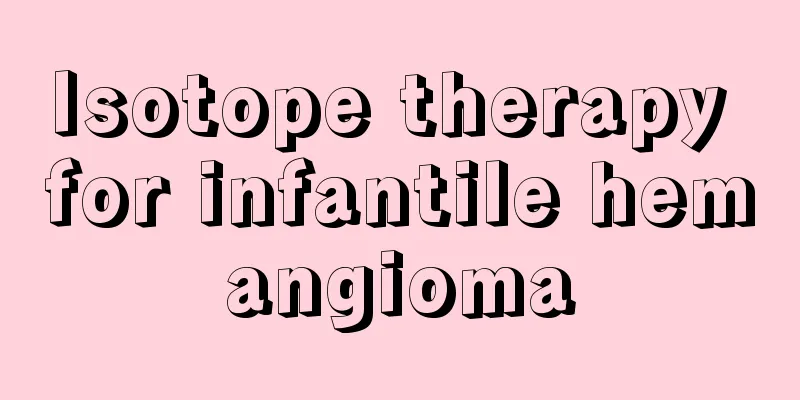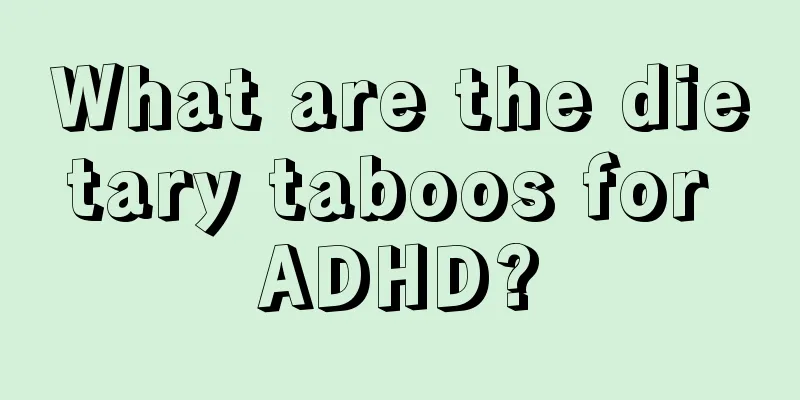Isotope therapy for infantile hemangioma

|
Isotope therapy is a new treatment method. Many diseases can be treated with isotopes. Isotope therapy has many effects. Some people think of using isotopes to treat children's hemangiomas. It is also a treatment method that many parents are worried about. Because it is a new method, few people use it. So can isotope therapy be used for infantile hemangiomas? Isotopes cannot be used on any hemangioma. Not only can they not completely cure the hemangioma, but there is also the possibility of residual carcinogens. The key to the treatment of hemangioma lies in the choice of treatment method, rather than a single choice of hospital. Usually, many hospitals treat hemangiomas in the same old way, which will cause trauma and recurrence. It is recommended to use special Chinese medicine for external use to completely cure your child's hemangioma. Because the cause of hemangioma is local blockage of blood vessels, only by using special Chinese medicine for external use in the tumor area to clear the blocked blood vessels, the hemangioma can be completely cured without hospitalization, and it can completely disappear, and there will be no recurrence after healing, and no scars. Surgery, laser, freezing, injections, radionuclide application and minimally invasive treatment all destroy the blood vessels at the hemangioma, rather than clearing the blocked blood vessels, so it is easy to relapse and leave scars. Moreover, once the blood vessels are damaged, other treatments will never be able to restore them. The risk is also very high. If the hemangioma is not cured in time, it will continue to grow, and it is also necessary to prevent collisions that may cause the hemangioma to rupture and bleed heavily. Treatment: ①Surgical resection; ② Cryotherapy; ③Radiation and isotope therapy; ④ Sclerotherapy; ⑤Laser treatment; ⑥ Copper needle therapy for hemangioma. 1. Surgical treatment: Use surgical methods to remove the diseased tissue to achieve the treatment goal. It works well for isolated and smaller lesions. Generally speaking, the affected area has abundant blood vessels and a large amount of blood, so the amount of bleeding during surgery is extremely large, often causing severe hemorrhagic shock. A large amount of whole blood needs to be transfused during the operation, making the operation difficult and dangerous. At the same time, since the blood cannot be completely removed after bleeding, the operation is forced to be terminated, and the postoperative recurrence rate is very high. After surgical removal of part of the tumor, local deformity, loss and functional impairment may remain. The cost of surgery is high and is a burden that patients cannot afford. Facial skin capillary hemangiomas can be treated with cosmetic skin transplantation to repair the affected area. Therefore, surgical treatment should strictly follow the indications and weigh the value of surgery before deciding whether to choose surgical treatment. 2. Cryosurgery: This method of treating hemangiomas originated in the 1960s (it can be used for small-scale superficial lesions as appropriate). The operator uses the extreme low temperature (-96°C) caused by the volatilization of liquid nitrogen, which is usually below -20°C, to condense the skin, hemangioma and tissues around the lesion area, forming ice crystals in the cells, causing the cells to rupture, disintegrate and die, and then the hemangioma disappears through the body's repair process. However, this method will leave local scars, and often leave serious defects, deformities and functional disorders after treatment of the eyes, corners of the mouth, nose tip and ears. Since it is difficult to control the intensity and depth of the freezing operation, and tissues have different abilities to resist low temperatures, incomplete treatment may occur. The recurrence rate is high, which directly affects the efficacy evaluation. In addition, the local scar defects, deformities and functional disorders left behind are not the expected results of the patients, but if such conditions do not occur, the treatment is often ineffective. 3. Radiation and isotope therapy: The principle of treatment is to use the r-rays produced by radioactive elements to bombard the nuclei of tissue cells in the affected area to break the DNA and RNA chains, terminate the synthesis of nucleoproteins, cause cell death and disintegration, and then achieve the treatment goal through the tissue repair process. Commonly used methods in clinical practice include: superficial X-ray irradiation, local irradiation with cobalt 60, external application of strontium 40 film, local injection of phosphorus 32 colloid, etc. After treatment, the treated area is left with atrophic scars due to radiation damage and the epidermis has desquamation. For this type of atrophic tissue and atrophic scars caused by radiation, experts recommend surgical excision, otherwise the possibility of cancer cannot be ruled out. Experts believe that radiation therapy should be avoided as much as possible during the treatment of hemangiomas. Through the above content, we know that when treating children's hemangioma disease, we cannot choose isotope methods to treat the disease. This treatment method is not the best way to treat hemangioma. If the child's hemangioma disease is not very serious and there is no continuous enlargement, then it is okay not to treat it. However, if the child's hemangioma disease is serious, it must be treated in time. |
<<: Symptoms of autism in babies
>>: Symptoms of intracranial hemorrhage in infants
Recommend
What is the calcium supplement diet for seven-month-old babies?
We all know that calcium plays a vital role in th...
What to do if your one-year-old baby has allergies on his face
Allergies are not unfamiliar to many people. It i...
What to do if your child falls and gets a bump on his forehead
When children are just learning to walk, they wil...
How to help children with autism
When we find autistic children, we should pay mor...
What to do if your child doesn't enjoy eating
Children have no appetite when eating, which mean...
What to do if a child has a hole in his or her big tooth
If children do not pay attention to dental care, ...
How much muscle liver is considered uremia in children?
The kidneys are very important to the body. We mu...
What to do if your child has Helicobacter pylori
After Helicobacter pylori enters the human body, ...
Why does my child have nosebleeds frequently recently?
If a child suffers trauma, he or she may have a n...
How to cure baby’s mouth ulcers quickly?
Parents are very concerned about their baby's...
How to effectively treat children's fever and cough
It is common for children to have a fever and cou...
What to do if your three-year-old baby has a sore throat
A three-year-old baby's sore throat is mostly...
Why does my one and a half year old baby toss and turn when sleeping at night?
It is quite common for babies to turn over in the...
Is it okay for babies to use pacifiers?
Whether it is good for children to use pacifiers ...
What should I do if my baby cries and holds his breath?
I became a mother a few months ago. As a first-ti...









